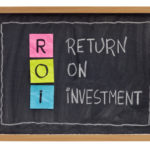Tim Macer
Long gone are the days when market researchers could claim that consumer insight was their exclusive territory. We talk to some of the new players.
The abundance of data available to enterprises and technological advances in analytical methods for turning this raw information into knowledge has opened up consumer insights to a new breed of players.
Market research is often the last thing they consider they are involved with.
I spoke with five individuals providing tools or applying approaches that researchers are likely to think of as highly disruptive or ingeniously trailblazing in equal measure.
Josef Zankowicz of SociaLabra
SociaLabra is a ten-strong software start-up based in Toronto that seems to have found a gap in the crowded market of survey software platforms with a product that could be highly disruptive.
CEO Josef Zankowicz claims to have no real market research experience beyond that of an informed buyer in previous roles in business process automation. Yet their product, launched in December 2014, is extremely research savvy. (The firm’s advisory board boasts several experienced researchers, including the editor-in-chief of this magazine.)
He claims process automation is in his DNA, which is how he came to notice that market research appears to be largely unreconstructed in the digital era. “Take sales automation and marketing automation,” he says. “Those processes have been tackled from a ‘let’s change the way that works so we can keep up with the way the world communicates’ standpoint.”
He sees market research as having barely changed. “For the most part, it is still in the pen–and-paper days, and this is most evident when you look at how surveys are deployed digitally: not only unable to keep up but not even able to communicate in the way people are communicating on the web.”
The first version of SociaLabra is an end-to-end research platform that few researchers would recognise. It tries to mirror people’s experience elsewhere on the web by being highly visual. It blurs the boundaries between surveys and other more qualitative engagements. A study can be built up from a mixture of quantitative elements (polls, surveys) and qualitative entities more like communities or online groups.
The emphasis on automating processes comes to the fore during survey deployment and report creation. Analytics move beyond demographics, allowing you to segment your data by personae that the system will help you to create from the actual people involved.
“We are looking at ways of integrating all of the players – the market research company, the marketing agency and the media companies – to drive a business outcome,” Zankowicz explains. “So the solution is designed to be attractive to all of these participants.” Thus surveys and research activities within the platform are termed ‘campaigns,’ and samples are called ‘audiences.’
Another aim is to bridge the gap between marketing, research and execution. “Because we are using lots of visualisation, we can identify which images, colours or words work over others. Not only are you better able to target, but you are also better able to communicate, which has always been the issue [in advertising] and is even more so now with digital communications.”


